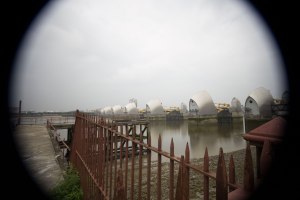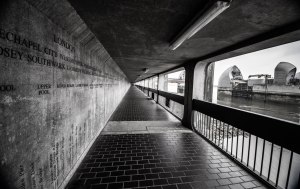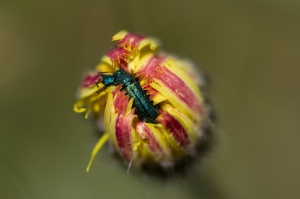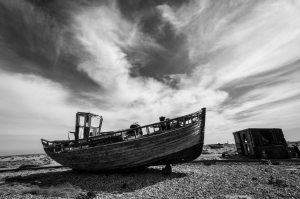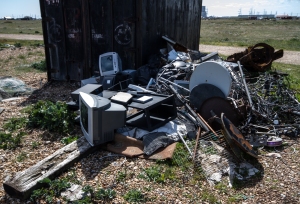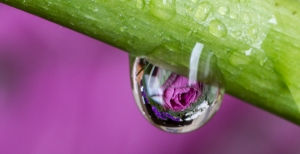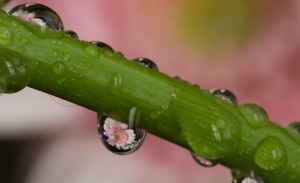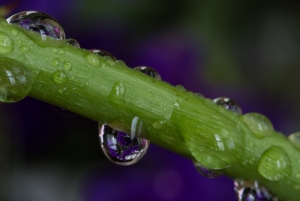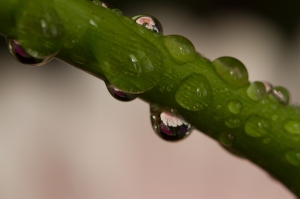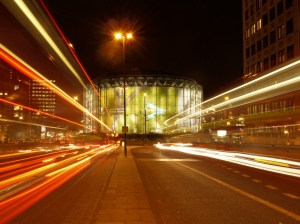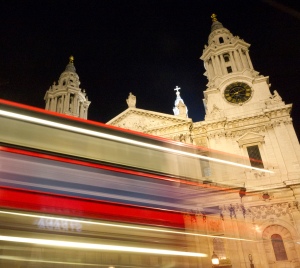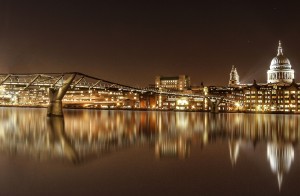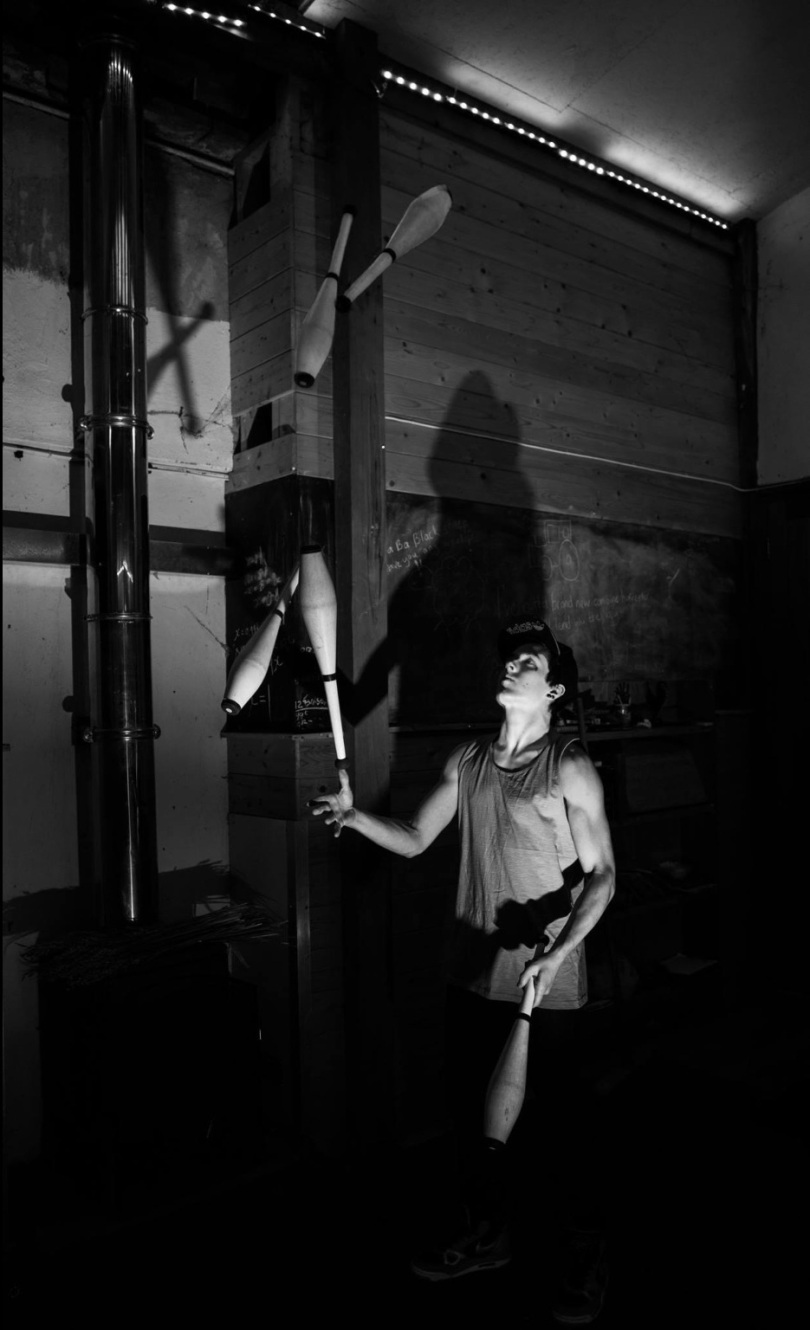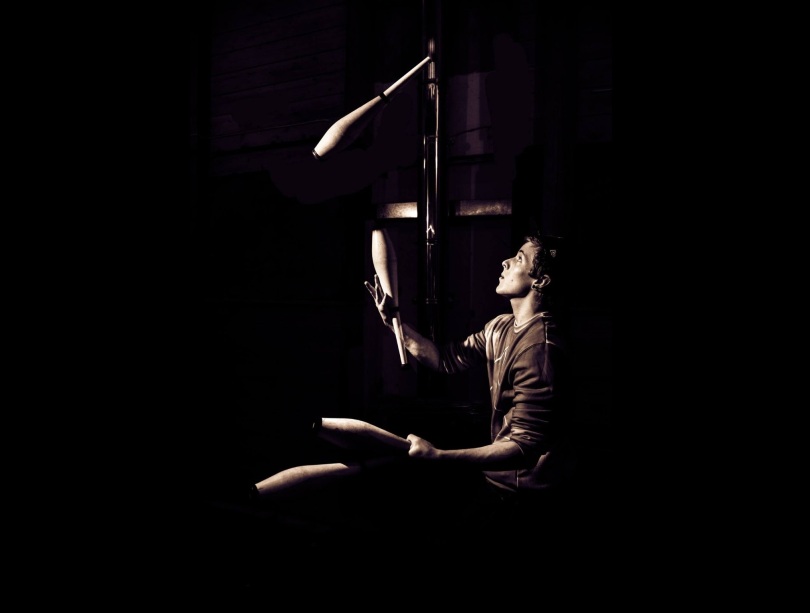Brilliant and truly motivating, if not envy inducing, blog about living life filled with travel, exploration and adventure. Breaking away from the shackles of our own making, the artificial importance we place on this ambiguous notion of security (must have job, must burden myself with mortgage) and really showing how we should all approach life. I wish I had appreciated the fact that I am my own guard and prisoner, it is your perspective that holds you back, your own stories whirring through your mind that become gospel truth. I am hoping to break away from that thinking and truly embrace a life that is far less restrictive by my own perceived can and can’t dos. Step 1: get rid of mortgage. Step 2: unshackle mind from consumer trappings. Step 3: grab camera, travel. And no, I am not biased because I came second in the travel photo competition, though that was lovely 🙂
The Colour of Night
Ah, long exposures, night photography, they make everything look so shimmery and lovely! In terms of settings night photography is very easy to master, tripod and long exposures are the key. Composition and colourful lighting adds a beautiful touch and makes even the most common place photos look fabulous..

London Eye and Westminster Bridge
If in doubt..Shoot Birds!
Not, literally of course. The photo below was probably only one of two I was happy with following my recent expedition to Little Venice. The place, undoubtedly gorgeous and photogenic, suffered much on a cold, wet, grey and cloudy day and I did not feel I was doing it justice by posting any of those photos on the blog (or maybe, I’m simply not that good a photographer!)
Some playing about with Photoshop followed – attempts to superimpose a blue sky etc., but the whole feel was wrong. So I resigned myself to this one image – which could be anywhere and vowed to return to Little Venice when the weather permitted better photos.
Thames Barrier on a hazy day
Last Thursday despite a gloomy and hazy looking day, I decided to try out my new camera, the Canon 6D. I upgraded from a Canon 7D and was eager to not only try out my ultra wide lens with this new full frame camera, but also to practice with my ND filter. So, regardless of the lack of movement – in the water, the clouds and indeed the air (it was a particularly muggy day) I doggedly ventured to the Thames Barrier with my friend, Louis Amore. He and I wanted to see if we could capture some of the motion blur effects you can get on clouds and water with a 10 stop ND filter and as this would be the first time I used my ultra wide lens with my new camera, I was eager to go ahead -despite the likelihood of mediocre results.
We walked through Greenwich and took the river taxi to North Greenwich by the O2 which is about a mile short of the Thames barrier, but a pleasant walk along the Thames Path to get there. The Thames Barrier is London’s flood defense; it is designed to protect London against a very high flood level – when the water rises by around 16ft the barrier’s closure mechanism is triggered. This happens a few times a year, although concern has been increasing with regards to the Barrier’s sustainability given the ever increasing sea levels due to Climate Change. The Environment Agency, however, does not have any plans to replace it until 2070. It was opened in 1984.
Attaching the 10-20mm Sigma lens to the 6D gave nothing away about its incompatibility; indeed it was only after taking a couple of shots I noticed a black circular frame, like a heavy vignetting effect on each photo. Asking Louis what it was, he realised that the lens was designed for a crop frame camera, and the black circle was the edge of the inner lens showing through on the full frame sensor. Devastating! Not only is my favourite lens unusable with my new camera, I had just bought an ND filter too. Below is an example of what happened to my photos..
Undeterred, I immediately went online and ordered the Sigma 12-24mm – the equivalent ultra wide lens suitable for a full frame sensor. I also discovered that Sigma Lenses with the letters DC in their description are for Crop Frame and those with DG are for Full Frame. Hope this may be useful information to some of you! I equally decided to still go ahead and practice with my ND filter, limiting the results I was able to get, but I thought I may be able to salvage the odd capture through extensive cropping. I managed to get a couple – an example of which is below:
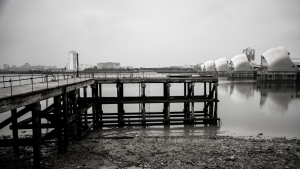
The Thames Barrier – the still water effect achieved with a 10 stop ND filter on a 25 second exposure.
Disappointed in having to crop so much out of my exposures, I moved on to using my 100mm macro lens for some shooting – it’s a handy, lovely lens that can be surprisingly versatile in landscape shots – the only result being I could no longer use my ND filter as it was a different width. Still, I was very happy with some of the resulting captures:
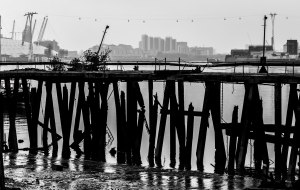
A view of the Dome and Canary Wharf in the distance – the haziness of the day lends to the rather pleasant effect on this capture.
And this one, also taken with the 100mm macro – not a landscape shot I would have expected possible with such a lens – not to mention the unique compositional challenges and as such unusual results it produces on otherwise possibly blander versions of the landscapes I would have achieved by using a wide angle lens.. I am very glad that through necessity, I discovered these possibilities!

A fisherman on the river bank; the Dome and Canary Wharf offering a fitting backdrop with the haziness of the day.
And finally, the Thames Barrier Walkway – great for setting up your tripod and taking your time with composition and long exposures required with the ND filter – just take note that it gets locked at 5pm on weekdays and you will get chucked out!
An unusual, industrial, in parts desolate and completely unique place to visit. Even if the weather offers the dullest light – you may find it works in its favour – adding atmosphere and a certain ethereal feeling to the place. I would recommend you ensure your lenses are right for your camera however 🙂 but equally, it’s always worth trying using different lenses for purposes other than the ones they were immediately designed for (though perhaps using an ultra wide lens for portraits may be the exception to this suggestion…)
Britain’s only desert – Dungeness!
Apologies for the delay in getting a post out – the last two weekends have involved much traveling and I thought I would venture a tad beyond the M25 perimeter and explore Britain’s only desert, a strange, eerie and undoubtedly peculiar place, Dungeness. Located in the south coast near Hastings, Kent it is feasible (just) to do as a day trip, which is precisely what I, and a pro photographer friend of mine, Louis Amore did last week.
Dungeness is a private estate, owned by the Paine Family trustees, but open to the public. It is a site much used by TV and film crews and its shingle beach is home to a number of derelict boats, fishing debris, flotsam and jetsam and rubbish left by fishermen, visitors and residents. Dungeness also has two nuclear power stations, two lighthouses and is a National Nature Reserve, as it’s home to a unique variety of wildlife and more than 600 different types of plants – which is apparently, about one third of all plants found throughout the UK. It is also one of the best places to spot rare species of moths, butterflies, bees, beetles and spiders with many not found elsewhere in the country.
I spotted some jade/blue creatures and have been subsequently told they are either Greenish Blue Shiny Beetle – Cicindela sexguttata; or a shiny blue tiger beetle. Either way these creatures are about half an inch long and have a shimmery metallic feel to their colour. It was lovely to finally take macro shots of something this bright and beautiful, and there were thousands of them about.
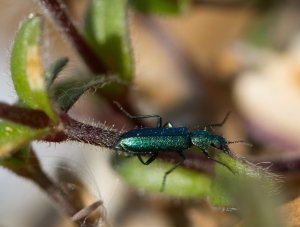
Took a few shots to get this, but I was pleased with snapping this tiny creature with some degree of clarity.
As well as these fabulous macro opportunities, there are abandoned boats and shacks, random debris and rubbish, all of which give the place a desolate, eerie feeling, one of isolation and abandonment. Walking around, you can feel as if you are among the result of a nuclear war; the post apocalyptic feel not even interrupted by the rare presence of another human being. Throw in some interesting cloud formations and you can get exciting and dramatic photographic results.
In short, visit the place – its weird and wonderful, or wonderfully weird, with great photographic opportunities. To see artistic results, far superior to mine and to really appreciate the potential of this place, go over and check out Louis Amore’s shots – as a fine art photographer he knows what he is doing!
It’s raining? Stay indoors and have fun with still life!
A quick announcement:
Last week, Paul Steele, aka The BaldHiker asked me to be a guest author for this blog. I was extremely honoured to be asked and delighted to contribute a piece with some photos. The post is called Intoxicated by London and features some images of London at night and in sunny days… You can read it here.
************************************************************
Speaking of sunny days, writing the piece got me thinking about this wretched weather we are having and how it is stopping me from going out exploring the city and taking photos. As photographers therefore, we must be creative and work around obstacles such as rain, especially in Britain, for we would be almost perpetually flummoxed otherwise..
So lets stay indoors and have some fun with a macro lens!
One of the photographic tricks that I have always loved is reflections of flowers and other objects in water droplets. I used to love seeing these clever shots and have always wanted to learn how to do this. Thinking it would be very complicated I never attempted to do it until one wet afternoon when I decided to finally take the plunge and just work it out. What I actually discovered is that with a bit of tweaking here and there, the process is pretty straightforward.
Ingredients:
1 vase of flowers
1 extra vase with a single flower
1 camera
1 macro lens (or macro attachment)
1 tripod
1 cable release
1 can of water spray
Some patience!
So, I begun with placing the vase of flowers on the table and the second vase with the single flower around a foot or so in front of the first vase. I sprayed the stem of the single flower with water until water droplets formed and stayed on the stem. Then, moving the camera in front of the stem I manually focused the lens on the droplet. After that I moved the first vases back and forth until I could see the flowers reflected in the water droplet through the lens. One final tweak on the focus to make sure it was pin sharp and there you have it. So if I were to do again now, it would be simple enough. Working this out did take a few hours however as I struggled with how to get the flowers in focus within the water droplet. Once I realised that the droplet itself acts like a lens I understood it was matter of adjusting the distances between the two vases and the camera, like I say – it is simple but requires patience and attention to minute detail.
I posted a couple of my results already. Below are ones that didn’t quite work – to highlight how tiny adjustments to the positioning can make a big difference! A pedants’ heaven, no doubt. But either way, a pretty fun way of spending a couple of hours taking photos!
I hope to get a chance to do this with the flowers in my garden at some point, but with this weather, that may take some time..
Long Exposures – impressive and….easy!
Before I knew anything about photography I was always hugely impressed by photos depicting long exposures, those colourful trails of light, they seemed so complicated and felt to me, incredibly out of my reach. That is until I was shown how, and realised that for the impressive results, light trails through long exposures are probably one of the more straightforward aspects of photography. Preparation and some basic equipment are required and like anything in photography, the light trails only form part of the story – composition is crucial!
Light trails are achieved by a moving object in the low light of the evening and for extra effect you can target double decker buses instead of cars or vans as you get two sets for your efforts. I managed to capture just that after setting my tripod up in the middle of Waterloo Bridge one cold night – I waited a while to get a bus on either side, but eventually managed to get the shot.
So, to do this, you need a dSLR or a point and shoot that lets you switch to aperture priority setting. You also need a tripod or the side of a wall if it allows for the correct and still positioning of your camera.
Set up your camera on the tripod, make sure the ISO is set to 100 for crystal clear images, set the camera to AV (Canon) or A (Nikon) to indicate aperture priority and you can let the camera decide on the shutter speed depending on the light. Choose your vantage point (around 50 to 100 meters from a bus stop for example) and you can then time the shutter as you see the bus / or other light source heading past your frame. The results are very satisfying but you need to ensure you don’t get too wowed by the immediate results and cast a critical eye on your framing to truly stand out photos. Good spots around London are opposite St Paul’s (see my efforts below):
As is over the Millennium Bridge for cool shimmering water effects of the river Thames: (and if you are lucky you may even get light trails from passing boats).
Add a dash of Photoshop and you can really play about with the reflections for a truly effective result! 🙂
Feel free to get in touch if you have any questions!
The long road to the beginning
So here I am again, at the start. Except, except, it isn’t I suppose. I have not picked up my camera for months, work, life, money, gets in the way and I have missed it. So much. But unlike the start, I begin again with a few advantages. I know how to use my camera.
Sure, skills need polishing and refinement and yes, my experience of studio lighting has not been what anyone would call advanced, but yet, I find that the minute I hold my camera, none of that matters. I remember, and more importantly I feel the joy and love of taking photos again. I don’t proclaim to have any particular talent or intuitive feeling towards the creative flow others can engage, only that I have missed how I have felt, and feel when I have the opportunity and time to take photos.
I was very lucky to have been asked to do a shoot of the wonderfully accomplished Matthew Greeney, juggler extraordinaire(!) last Sunday and it was wonderful! It reminded me of a significant part of my life I have neglected of late, and what better way to get back on the horse as it were!




